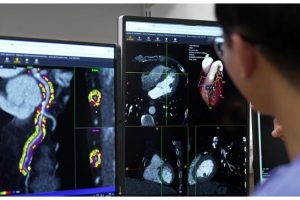Burdening physicians with more clicks during a patient visit in the electronic record is bad practice – and one that is about to become more widespread rather than reduced. This is contrary to the recent Strategy on Reducing Burden Relating to the Use of Health IT and EHRs developed in collaboration by Centers for Medicare and Medicaid Services and the Office of the National Coordinator for Health IT. On one hand, to ease physician burden – the overarching goals of CMS, and ONC – this new strategy is focused on reducing the time required to record health information in EHRs and streamlining documentation requirements for Medicare Programs.
On the other hand, CMS is now causing more time and effort on the part of the ordering physician by requiring them to access a “CMS approved” clinical decision support mechanism, or CDSM, to assist the physician in making the appropriate treatment decision (ordering advanced imaging) for their Medicare patients’ condition. If the ordering physician does not access an approved CDMS, the radiologist will not be paid their professional fees, nor will the hospital be paid the technical fees for the advanced imaging study performed.
So-called “outliers” – physicians who do not use an approved CDSM – will be forced to use prior authorization processes to fulfill the CMS requirement. The prior authorization methodology is not yet developed for this Appropriate Use Criteria. Radiologists are acutely aware of this requirement. But how many physicians who order advanced imaging for Medicare patients are aware of this pending AUC, and what is the feasibility of implementation and adoption?
More background on the AUC for advanced imaging can be found in CMS documentation, which states: “The Protecting Access to Medicare Act (PAMA) of 2014 section 218(b) established a new program to increase the rate of appropriate advanced diagnostic imaging services furnished to Medicare beneficiaries.”
Effective January 1, 2020 the Educational and Operations Testing Period – Claims Processing Requirements began and is set to be fully implemented on January 1, 2021. The list of “CMS approved” CDSMs is small in comparison to the list of ambulatory care EHRs. There is no financial incentive for small EHRs to spend the time and money to develop a clinical decision support tool that meets CMS qualifications.
In a recent informal analysis, it was identified that while many radiology facilities are hospital owned and using the larger Epic or Cerner EHRs, they still have countless ordering physicians who are using ambulatory care EHRs which do not have fully integrated CDSMs.
If the ordering physician is using one of these EHRs, the workflow will require additional keystrokes. These keystrokes during the order entry process are needed to navigate to a portal, login, and enter required information once inside the portal to get the verification an “appropriate” study is being ordered. To show this verification, the electronic order transaction must have a code, a modifier, and a G-Code which identifies the CMS approved CDSM.
All too often, software companies or implementation teams will take shortcuts and add more checkboxes to the user interface for the ordering physician to deal with because the development initiative is too cumbersome or time consuming to meet the CMS deadlines. CDSMs, if they are integrated properly into the EHR, should be seamless to the ordering physician unless the needed patient data does not exist in the database. The physician should be alerted only if there is not enough clinical information to substantiate the advanced imaging being ordered for the patient’s condition. These alerts would be educational to fulfill the purpose of the AUC.
Perhaps the novelty of radiology practices enduring the financial burden if the ordering physicians are non-compliant may be what alerts physicians to this requirement, but it won’t necessarily make them compliant. One would hope that the new strategy from CMS, HHS and ONC to reduce physician burden would include removing or tweaking this AUC before the end of this year. Some physicians believe that this will be the case. CMS is promising to streamline documentation requirements for claims payments and is taking suggestions.
You can submit your suggestions to: ReducingProviderBurden@cms.hhs.gov.
In the interim, there are six months left to prepare. The first steps are to reach out to the ambulatory care EHR vendor and verify the existence of a CDSM for advanced diagnostic imaging services for Medicare patients.
If the ordering physicians’ EHR has an integrated CDSM this won’t be a difficult pill to swallow. If there is not an integrated CDSM, the next step is to contact the EHR project manager and begin the implementation of this new and cumbersome workflow. Please check your EHRs for CDSM integration to ensure they’re ready.
Source: https://www.healthcareitnews.com/blog/more-documentation-complexity-way-advanced-imaging-orders
































